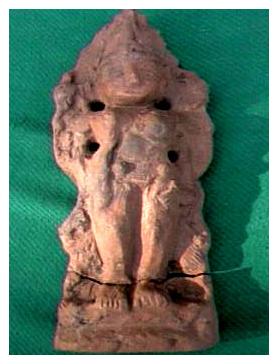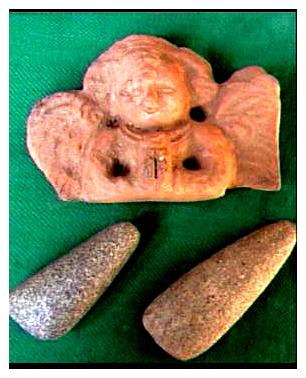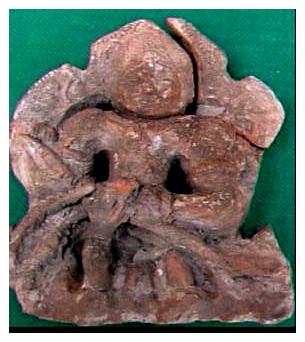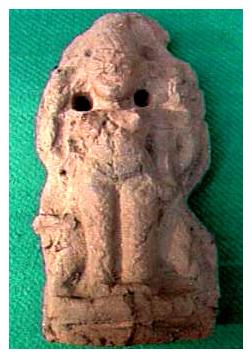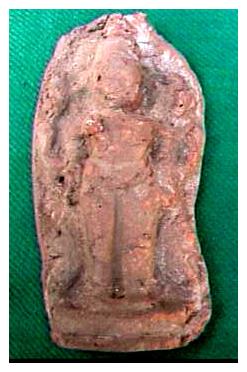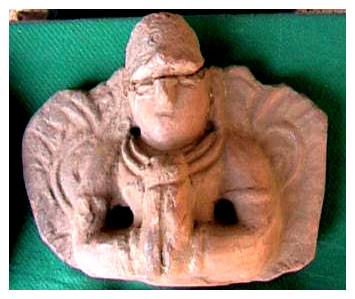 images from religious cults, which are among the best records of popular Indian religion from the earliest period.
images from religious cults, which are among the best records of popular Indian religion from the earliest period.
The objects displayed here illustrate three important uses of terracotta
 images from religious cults, which are among the best records of popular Indian religion from the earliest period.
images from religious cults, which are among the best records of popular Indian religion from the earliest period.
 modelled bricks, ranging in date from the fifth to the eighteenth centuries AD, which testify to the popularity of brick and timber architecture throughout Indian history.
modelled bricks, ranging in date from the fifth to the eighteenth centuries AD, which testify to the popularity of brick and timber architecture throughout Indian history.
 terracotta icons, such as votive plaques, which served as vehicles for disseminating religious ideas
terracotta icons, such as votive plaques, which served as vehicles for disseminating religious ideas
